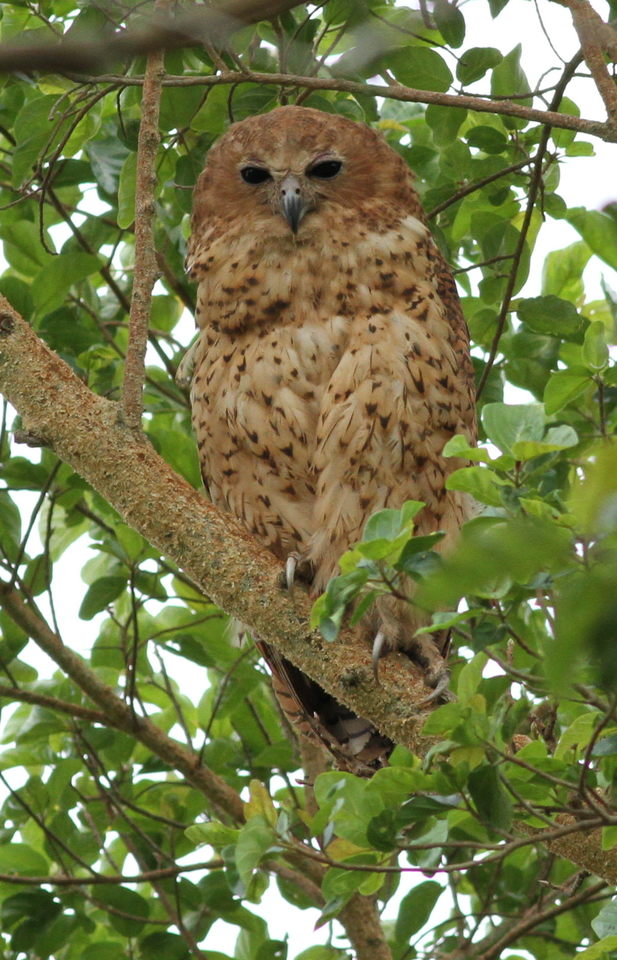- Home
- Conservancy
- Pel s fishing owl
WHERE TO SEE Pel s fishing owl
Description
By Author
Pel's fishing owl is one of the largest owl species in the world. Among the world's owls, it ranks as the fifth heaviest on average, the seventh longest in length and measuredwing cord and fourth longest in mean wingspan, although not all large species have had measured wingspans. It measures 51–63 cm (20–25 in) in length, spans around 153 cm (60 in) across the wings and weighs 2–2.35 kg (4.4–5.2 lb).
Adults are rich ginger-rufous with dense dark bars to the upperparts and scaling to the underparts. The feathers around the head are loose and long, giving the head a shaggy appearance. The tarsi and toes are unfeathered and straw-colored. The white throat is often largely obscured but can be puffed up in displaying birds during courtship. The flight and tail feathers are barred with lighter and darker feathers. The eyes are distinctly dark, often blackish in color. The two adult sexes are similar looking but females are generally less rufous in color and have a more indistinct facial disc. There is considerable variation in coloration and barring in adult birds, with some birds having extensive pale feathers with others having several blackish markings. Juveniles are more uniform buff than adults. Unlike the eagle owls, the ear tufts of the Pel's fishing owl are barely visible, giving it a very round-headed appearance. The two related fishing owls are smaller and lack the dark barring and scaling (though they do have dark streaks below)
Fun Facts
Unlike most owls, they have minimal feathering on the toes and the tarsus, thus minimizing the amount of plumage that gets wet while fishing. Like diurnal raptors that specialize in fish, they have spiky scales on the bottoms of their feet that help them grip slippery fish. Since hearing and auditory stealth is not important to its hunting techniques, this owl does not have strong hearing and does not have the soft edges to its flight feathers that most owls share, which makes them almost impossible to hear in flight.
The song of the male Pel's fishing owl is a deep, sonorous, horn-like boom, first a single and then a higher pitched huhuhu. The male also utters a ringed hoot, much higher pitched than those of most eagle-owls, followed by a deep, soft grunt: whoommmm-wot or hooomm-hut. The calls of the male are repeated ever 10 to 20 seconds can be heard from up to 3 km (1.9 mi) away. While singing, the male's throat and breast are often highly inflated. The female's songs are similar but are higher pitched and even in a double-note, i.e. hoot-oot. Females and young at the nest wail a shrill wheeoouu while anticipating food.
